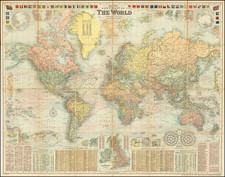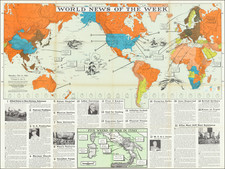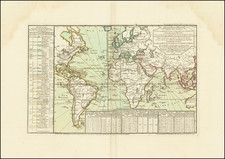Fine example of Samuel Thornton's important map of the World, which was separately issued and bound into a few examples of the English Pilot, Third Boo k.
A large sea-chart of the world, on Mercator's Projection as revised by Edward Wright, whose corrections improved accuracy for navigation.
The chart shows California as an island, and has been updated with the Mississippi and the Great Lakes in North America. The map is laid out in remarkable detail, with great care given to a description of all the prevailing Trade Winds, including seasonal changes.
The map provides a remarkable treatment of Australia, being one of the earliest maps to include a conjectural eastern coastline. The Coastline of New Zealand is also shown. The voyages of Tasman and Dampier are shown along with Halley's route.
The map is embellished with a number of animals, sea creatures and sailing ships.
John Thornton was a respected and prominent chartmaker in London in the latter part of the seventeenth century. He was one of the final members of the Thames School of chartmakers and served as the hydrographer to the Hudson's Bay Company and the East India Company. He produced a large variety of printed charts, maps, and atlases in his career, but he was also a renowned manuscript chart maker. Born in London in 1641, he was apprenticed in the Drapers Company to a chartmaker, John Burston. After being made free of the company (1665), he was part of the combine that took over John Seller’ English Pilot in 1677. Thornton was trusted by the naval and navigational establishment of the day; one of his clients was Samuel Pepys, naval administrator and diarist. Thornton died in 1708, leaving his stock to his son, Samuel, who carried on the business.
Samuel, born in ca. 1665, also had apprenticed in the Drapers Company and was made free a year after his father’s death. He continued the business until 1715, when he died. His stock then passed to Richard Mount and Thomas Page.









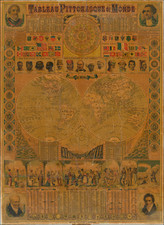
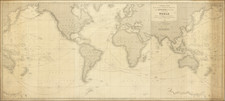
![Western Hemisphere [and] Eastern Hemisphere](https://storage.googleapis.com/raremaps/img/small/77454.jpg)
